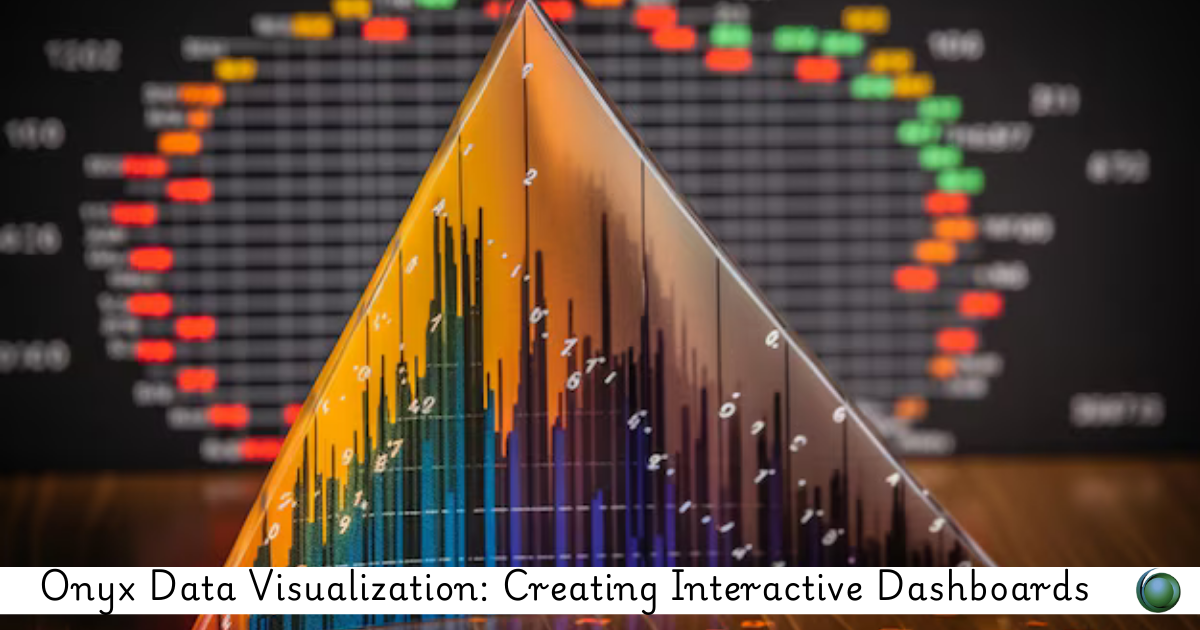Description
Introduction
Onyx provides powerful tools for data processing, but visualizing that data can elevate insights and improve decision-making. This guide focuses on using Onyx for data visualization, specifically in building interactive dashboards that present data dynamically. You’ll learn how to integrate Onyx with visualization tools, design intuitive interfaces, and create impactful dashboards that enhance data accessibility and interactivity.
Prerequisites
This guide assumes readers have:
- A foundational understanding of Onyx workflows.
- Basic experience with data visualization concepts.
- Familiarity with tools like D3.js, Plotly, or other data visualization libraries.
- A working Onyx environment with access to data sources for visualization.
Table of Contents
- Introduction to Data Visualization in Onyx
1.1 Benefits of Visualizing Data in Real-Time
1.2 Overview of Interactive Dashboards and Use Cases
1.3 Choosing the Right Visualization for Your Data - Setting Up Onyx for Data Visualization
2.1 Configuring Onyx with Visualization Tools
2.2 Data Preparation for Visualization Workflows
2.3 Ensuring Real-Time Data Compatibility - Designing Effective Dashboards
3.1 Key Principles of Dashboard Design
3.2 Structuring Dashboards for Intuitive Navigation
3.3 Incorporating Responsive and Accessible Elements - Creating Basic Visualizations
4.1 Building Charts and Graphs with Onyx Data
4.2 Using D3.js and Plotly for Interactive Elements
4.3 Displaying Key Metrics and Summaries - Advanced Visualization Techniques
5.1 Integrating Filters and Controls for User Interaction
5.2 Applying Real-Time Data Updates and Refreshes
5.3 Leveraging Heatmaps, Geomaps, and More Complex Visuals - Enhancing User Interactivity in Dashboards
6.1 Adding Drill-Down Capabilities for Detailed Insights
6.2 Creating Dynamic Elements Based on User Input
6.3 Implementing Hover, Zoom, and Other Interactivity Options - Optimizing Dashboard Performance
7.1 Minimizing Latency for Real-Time Data Feeds
7.2 Optimizing Data Processing for Smooth Visual Updates
7.3 Caching Strategies for High-Frequency Data - Deploying and Sharing Onyx Dashboards
8.1 Choosing Deployment Options (Cloud, Local, Embedded)
8.2 Ensuring Security and Access Control
8.3 Sharing and Embedding Dashboards in Other Applications - Case Studies: Successful Interactive Dashboards
9.1 Examples of High-Impact Onyx Dashboards in Action
9.2 Analyzing Design Choices and User Feedback
9.3 Lessons Learned for Future Projects - Best Practices and Tips for Dashboard Development
10.1 Balancing Aesthetics and Functionality
10.2 Testing Dashboards for Cross-Platform Consistency
10.3 Documenting and Updating Dashboards Regularly - Conclusion
11.1 Summary of Key Techniques for Interactive Dashboards
11.2 Encouragement to Explore and Experiment Further
11.3 Resources for Continued Learning and Enhancement in Onyx
Conclusion
Onyx’s capabilities extend significantly with the integration of data visualization tools to create interactive, real-time dashboards. This guide equips you with the skills to design and deploy dashboards that bring data to life, enhancing both accessibility and interactivity for users. With the power to dynamically explore insights, users are empowered to make more informed decisions. As you continue to refine your dashboard skills, Onyx can serve as a comprehensive foundation for transforming complex data into valuable visual stories.
If you are looking for customized info, Please contact us here







Reviews
There are no reviews yet.